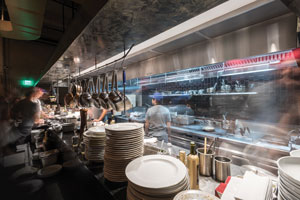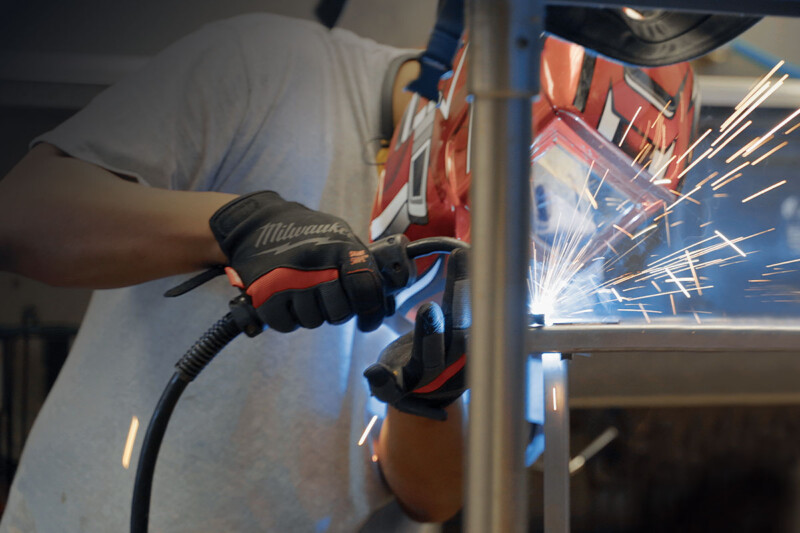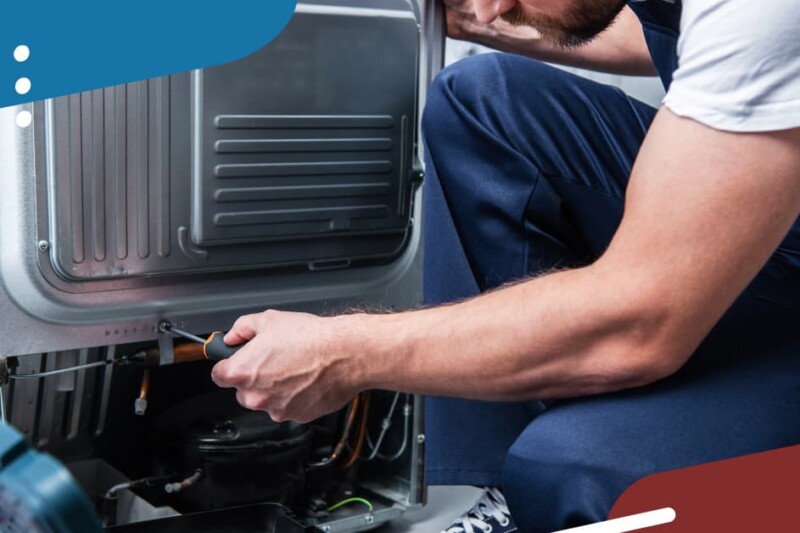
You have a kitchen exhaust system for three reasons (besides the fact that they’re required in most operations): the safety of your guests and staff; their comfort; and protection of the restaurant itself.
Kitchen ventilation systems pull heat, smoke and odor away from cooking surfaces, which makes both the kitchen and restaurant environment more pleasant and comfortable, and helps protect against fires. Type I hoods, which are required over most gas-and solid fuel-burning equipment or cooking equipment that produces grease or smoke, also have a fire suppression system for additional protection against grease fires.
With today’s technology, kitchen exhaust systems are very good at doing their jobs. But over time, grease and effluent can build up in the hood, plenum, ductwork, exhaust fan and even the roof itself, becoming a hazard of its own. And if you think all you have to do is clean the grease baffles or filters in the hood once in a while, think again.
Why?
The National Fire Protection Agency, and/or your local fire code, requires you to professionally clean and inspect your kitchen exhaust system on a specific schedule. According to NFPA-96 section 4.1.5 you (the owner) are responsible for the “inspection, testing, maintenance and cleanliness” of the exhaust and fire protection systems. Further, the NFPA standard says the entire system must be inspected and cleaned by someone who’s properly trained, qualified and certified.
In other words, you can’t just hand off the dirty job of cleaning the exhaust system to a low-priced guy who knows a guy with inadequate insurance coverage. You’re on the hook for the cost of damage and potential litigation in the event of a fire.
You need to hire a qualified, professional cleaning company to service and maintain your exhaust system. But you and your store staff also need to know how your exhaust system operates, when and how it should be cleaned, and what to expect from a contractor.
“There’s a lot of terrific new technology in exhaust systems,” says Jim Roberts, Principal, DPW Sales & Service, Louisville, Ky., “but no one explains it to staff so no one understands what needs to be done. The biggest mistake operators make is failing to do maintenance due to the cost.”
“Too often, operators ignore warning lights or get too creative at bypassing exhaust system alarms instead of having a cleaning service do scheduled maintenance,” agrees Jim Powers, Owner, Air Flow Specialists, Satellite Beach, Fla. “Then, when the system doesn’t work the way it’s supposed to, the other big mistake they make is discharging the fire suppression system trying to fix the problem themselves.”
What And When?
How often your kitchen exhaust needs cleaning and inspection has less to do with the type of hood—canopy, island, eyebrow, shelf or pass over, etc.—and more to do with the type of energy or fuel used in your cooking equipment, the kinds of food you cook, and the volume you produce. Here’s a quick rule of thumb that’s required by NFPA:
• Solid fuel cooking: monthly cleaning
• High-volume cooking, e.g., 24-hr. operation, charbroiling, wok cooking: quarterly cleaning
• Moderate-volume cooking: semi-annual cleaning
• Low-volume operations (churches, day camps, seasonal restaurants, senior centers): annual cleaning
Local fire codes may preempt these general requirements or your own volume and type of food being cooked may warrant more frequent cleanings. “Some of the Texas de Brazil steakhouses we service need duct cleaning every two weeks,” Powers says.
Parts of the exhaust system, however, need cleaning on a more frequent basis. Employees should wipe down the hood box itself with a mild detergent and water solution daily to prevent grease buildup. If you’re using solid fuels, clean the spark arrestors in the hood every day as well.
Clean grease extractor filters regularly. Filters in both line hoods and fryer hoods at Wendy’s are cleaned monthly at a minimum, according to Ivan Blackmon, Director of Facilities and Construction at Wendco Group, Pensacola, Fla. Most contractors recommend cleaning filters weekly. Many operators clean filters daily just to avoid the hassle of grease buildup that can require overnight soaking in grease-cutting solution and/or hard manual scraping and scrubbing.
In most cases cleaning is as easy as running filters through your warewasher at the end of the day. In some locales, however, health code requires washing grease filters in three-compartment sinks. Some contractors offer a trade-out service, replacing your dirty filters with clean ones, and taking the grease-laden filters to their shop to be cleaned.
Depending on the type of hoods you have, other filters also need regular cleaning, maintenance and/or replacement. Systems with pollution control units have a series of filters. Typically, they have pressure sensors that indicate when filters are full and need to be changed. They also may contain charcoal filters to remove odors, which should be changed twice a year or four times a year if you’re using solid fuel.
You should check systems with electrostatic precipitators quarterly to test the system. Make sure you remove filter cells and wash them manually with detergent and hot water at least every six months.
Remember that even operations using water-wash or self-cleaning hoods need regular inspections and cleaning of the rest of the system, i.e., ducts, fan and roof containment.
Top To Bottom Cleaning
Exhaust systems comprise five major elements: hood, filters, ducts, fan, and rooftop containment. Kitchen exhaust cleaning contractors start at the top and work their way down the system. Here’s what you should expect.
Wastewater containment set-up. Contractors should disconnect movable equipment under the hood and wheel it out of the way. Then they’ll typically cover the stationary equipment with plastic sheeting and canvas tarps. They’ll remove the grease filters and form a chute with tarps or plastic sheeting around the perimeter of the hood that leads into a 55-gal. drum.
Rooftop containment clean-up. Contractors start the cleaning process up on the roof, first cleaning or replacing any grease pads around the exhaust fan housing and emptying and cleaning the grease containment trough or trap around the housing. While they’re up there, good contractors will check for grease accumulation or damage on the roof, and will check and clean or replace supply-side kitchen ventilation filters, too.
Exhaust fan cleaning and inspection. A properly designed exhaust fan housing should be hinged to give contractors easy access to the fan and ductwork. They’ll clean the fan blades and housing, inspect the fan and motor, test and tighten the fan belt if necessary, and grease the bearings if needed.
Duct cleaning. Contractors usually clean ducts with either pressurized steam hoses or more commonly hot water pressure washers. They also may add a chemical cleaner recommended by the manufacturer or one they make up themselves. DPW Services uses its own “brew” produced by a chemical manufacturer. Made with sodium hydroxide, sodium chloride and a little butyl, Roberts says it’s less caustic than the potash some contractors use. Technicians apply it with a pressurized foaming system on their trucks. For caked-on grease or tough spots such as corners or flanges, technicians might use scrapers, stiff synthetic bristle brushes or poly scrub pads. When used properly, these tools shouldn’t scratch the ductwork.
NFPA requires that ducts have access panels every 12 ft. on horizontal runs, on every floor of vertical runs, and any place the ductwork bends or turns. Access panels should be large enough for cleaners to do an adequate job, and contractors will recommend new ones if those you have are too small. For example, an 18-in. duct should have 18-in. x 18-in. access panels, but 24-in. wide is even better, allowing a technician to get head and shoulders inside to clean and inspect properly.
Hood cleaning. Contractors may use scrapers and brushes (carefully) on the plenum and hood interior for stubborn grease accumulation. Otherwise, they’ll usually clean it with the same pressure washer system used for the ductwork. The hood’s interior and exterior stainless may be manually cleaned with a degreaser if necessary or mild detergent, wiped down, and dried with clean cloths. Contractors take special care with demand-control hoods to protect their heat and/or effluent sensors during the cleaning process.
Grease filters. Cleaners disassemble and pressure wash baffle filters or wash them manually; then they dry and reinstall them in the hood.
Clean-up. Good servicers will collect all wastewater and grease from traps and clean and dispose of those collection containers properly. They return and reconnect all equipment and remove all their tools and tarps. Technicians should leave kitchens as clean or cleaner than they found them.
Final inspection and report. After cleaning up, contractors test exhaust systems to make sure they’re operating correctly and that the system isn’t losing pressure or leaking through the ducts anywhere. They should provide you with a written report documenting exactly what was cleaned, inspected and serviced, any parts that needed replacement, and even before-and-after photos of problems they encountered or areas of concern.
Choosing A Contractor
Look for certification. Kitchen exhaust cleaning contractors must be certified, otherwise you may be subject to fines and even your store closing. Professional accreditation, such as membership in the International Kitchen Exhaust Cleaning Association, is usually an indication of both certification and qualification.
Find out their areas of expertise. Some contractors may have more experience with certain types of hoods or exhaust systems from specific manufacturers. Align your needs with their expertise.
Ask for references. Check with other operators in your area about their dealings and level of satisfaction with contractors.
Learn what training they provide. Ask what kinds of training programs their personnel go through as well as average time on the job of their technicians. Also find out whether they offer training or education for your employees on how to operate and maintain your exhaust system.
Look for good communication. Your contractor should be your partner in keeping your restaurant, patrons and staff safe, and not simply call when it’s time to sell you something or perform a rote service.
A Final Note
Due to the cost, unit managers may balk at having contractors clean and inspect on a regular basis. After all, their incentives are usually based on bottom-line profitability. Make them aware of the potential liability the restaurant and your company face if there’s a fire. And remind them that a clean kitchen exhaust system that’s operating properly will partially pay for the cleaning in energy savings.
RELATED CONTENT
- Advertisement -
- Advertisement -
- Advertisement -
TRENDING NOW
- Advertisement -
- Advertisement -
- Advertisement -


